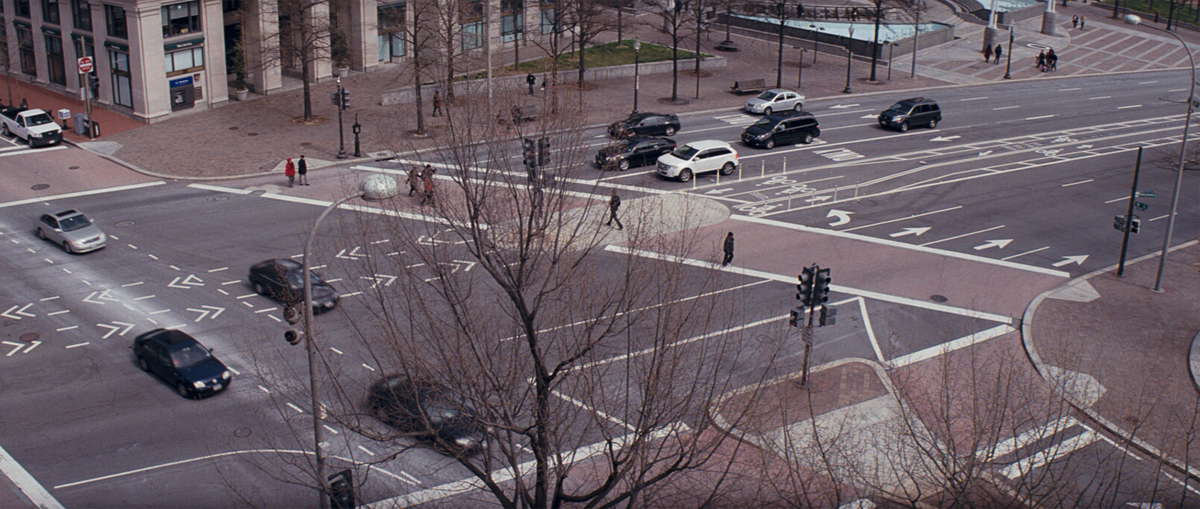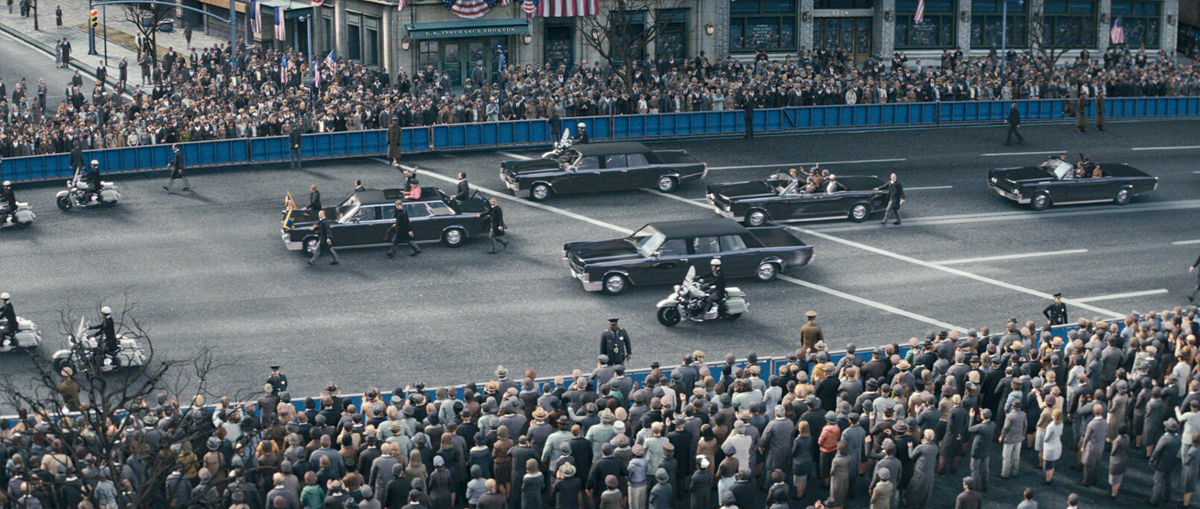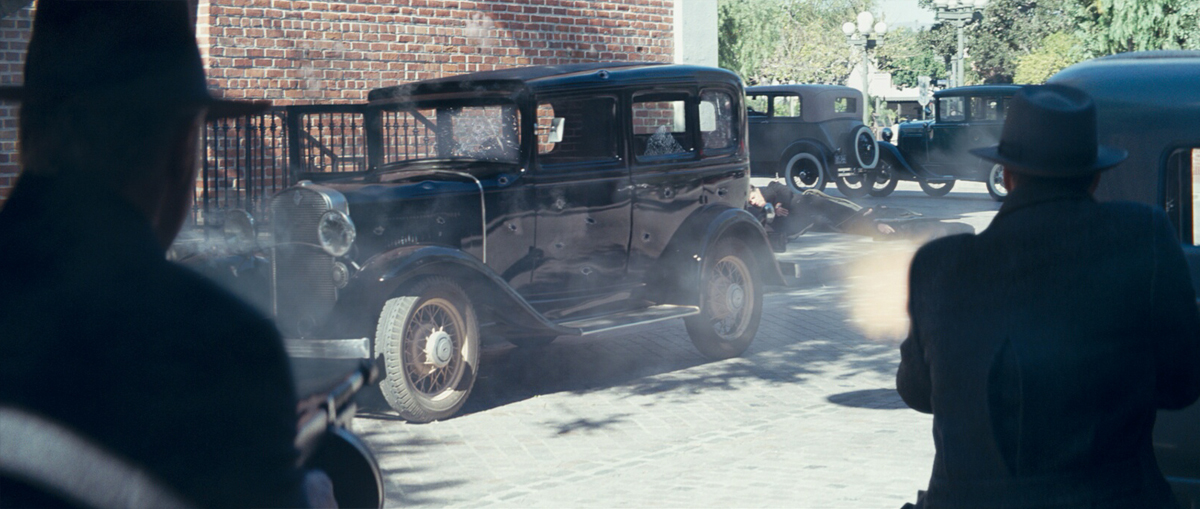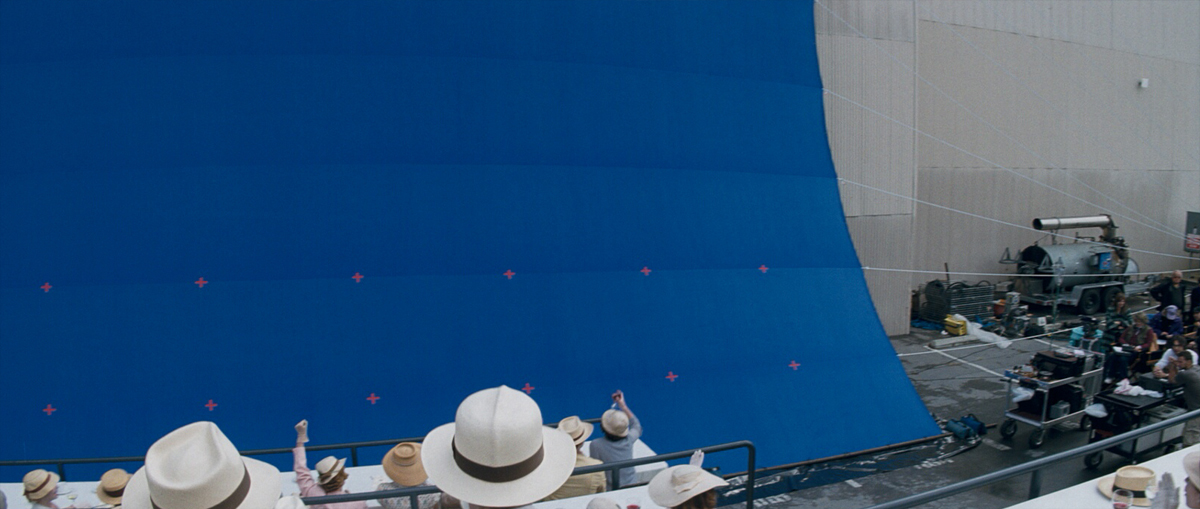Geoffrey Hancock has been evolving for over 10 years in visual effects, he worked at Gajdecki Visual Effects, Rainmaker and CIS Vancouver, the latter of which is now Method Studios. Geoffrey has worked on films like I Robot, VANTAGE POINT or NIGHT AT THE MUSEUM. This is his third collaboration with Clint Eastwood, he oversaw the effects of CHANGELING and INVICTUS.
Ollie Rankin worked at Weta for the first two LORD OF THE RINGS and then joined the teams of MPC and has worked on films such as KINGDOM OF HEAVEN, WATCHMEN or HARRY POTTER AND THE HALF-BLOOD PRINCE. For the occasion of INVICTUS, Ollie joined CIS Vancouver.
What is your background?
Ollie Rankin (OR): I’m from New Zealand, where I studied computer science and specifically artificial intelligence, a background which got me my break working on the team that developed the Massive crowd pipeline at Weta for THE LORD OF THE RINGS. Since then I’ve worked in California, Tokyo, and the UK before joining Method Studios in Vancouver three years ago as a CG Supervisor on INVICTUS, which was our most recent collaboration with Clint Eastwood and Michael Owens.
Geoffrey Hancock (GH): I began working in Vancouver in 1994 doing architectural visualizations and commercial work. Subsequent years of fast paced television series work and smaller films requiring a wide range of effects has given me a solid background for today’s more specialized effects required by larger feature films.
 |
 |
How was the collaboration with director Clint Eastwood and Production VFX Supervisor Michael Owens?
OR: Once again it was a great pleasure working with these two. Clint pretty much entrusts the entire responsibility for his films’ vfx to Michael, so we know that when we have completed a shot to Michael’s liking, it will almost always be blessed by Clint. This is the only director/vfx supervisor pairing I have ever worked with where such trust exists.
GH: On the three films (CHANGELING, INVICTUS, J. EDGAR) that I’ve had the pleasure to work with the Malpaso Production crew, I’ve been struck by the professionalism and dedication they exhibit both on set and through post production. We primarily deal with Michael Owens on a day-to-day basis, both remotely from his home and in the studio when he comes to Vancouver. Through the early part of post we are often in close contact with their editorial team, as sequences often evolve once the visual effects shots come together and options for expanding the story are discovered. One of the cornerstones of our work together is the trust between all parties involved and the excitement of working on great stories.
What was their approach about visual effects?
OR: For these filmmakers, visual effects is always used in service of the story. Since Clint is very focused on the human drama aspects of the story, it often falls to the vfx team to create the larger shots that provide a broader context and scale.
GH: Visual Effects seems to have become a comfortable tool for Clint Eastwood. As he’s had previous success with Michael and us using visual effects to expand his films, we have seen more types of work being suggested and relied upon.
 |
 |
How did you create the wide shot of burning Chicago?
OR: The shot of Chicago during the 1919 race riots is a good example of this. Having tried a number of different camera angles during the concept phase, we arrived at a particular view of the city that satisfied two key requirements. The shot had to be a broad enough vista to take in the scale of the riots in relation to the city as a whole, while remaining close enough to the action to convey the threat. Our matte painter pored over period photos and postcards to compose an over-sized image of the city, which we brought to life with footage of real fire and smoke. Then we added further small details like dancing shadows and window reflections and a slow pan to allow the audience to take in the scale.
GH: A lot of time and thought went into the way the audience’s focus would travel and shift across that shot. We wanted to know that key moments and elements would be absorbed. The timing of the explosions, the composition of light and shadow and the way this shot tied in with the preceding shot’s composition were all used to direct the audience’s eye.
Can you tell us in details the creation of the two motorcades sequences?
OR: The most poignant way that Hoover’s personal political power is conveyed in the film is through his relationships with the various presidents during his reign at the head of the FBI and the two inauguration parades serve to contrast his early influence against his later decline. It was therefore important that the two parades echoed each other visually. The film crew was able to get onto the actual balcony of Hoover’s old office in the Department of Justice building and shoot a couple of reference plates of the Pennsylvania Avenue parade route as seen from that perspective. Based on that viewing angle we set about creating two different period versions of the intersection below and the view beyond. Specifically we had to research the ages of the various buildings to determine which ones belonged in each era, create trees whose size reflected the appropriate age, build roads and traffic signals and shop fronts appropriate to both periods, populate it with crowds and vehicles and then decorate it all with moving flags and bunting. We specifically motion-captured an actor performing the iconic Nixon victory pose, with both hands raised above his head in “V” signs and we applied this motion to a digital character built to look like the actor who plays Nixon in the film.
GH: Both motorcade shots are entirely virtual, not having used the reference plate as a starting point. This freedom of composition and timing, compounded with a near limitless amount of details to be art directed, is always a long process with many people involved. It was especially interesting in this case to be playing the two shots off each other for contrast of emotion. A lot of thought went into bridging the lighting direction between surrounding shots to allow for the desired mood in these shots.
 |
 |
How did you create the crowd?
OR: We developed a proprietary crowd system and a library of reusable crowd assets for INVICTUS which we have extended on subsequent projects. This served as the basis for our CG crowds on J. EDGAR. Our crowd system, which is built on top of Massive and Houdini, is optimized to handle what we think of as the ‘bread and butter’ shots that constitute the majority of CG crowd work. That is, those shots in which a large space needs to be populated with an assortment of people, in a mixture of clothing styles, mostly sitting or standing on the spot and exhibiting a variety of behaviors. By pre-caching these type of behaviors and designing our crowd characters and wardrobes in a modular mix-n-match type fashion, we are able to very quickly populate a space with people, art direct their demographic and clothing distributions and choreograph their behavior.
GH: Having extended our crowd system on numerous films it is wonderful to see it in full swing once a film like J. EDGAR has fed it with new wardrobe periods and new motion capture behaviors. Michael often asked us to stir up the equation and lose the odd balls, which we can do quickly and accurately, allowing for a lot of art direction of the look and behavior of a crowd.
 |
 |
Did you create some CG cars?
OR: The opening shot of the movie, which establishes the Department of Justice building where Hoover worked his entire career, was originally conceived to take place in the 1930s. So the film crew had sourced a collection of vintage cars, then halted all contemporary traffic and filmed a number of takes of the vintage cars driving past the building. However, when they came to edit the film, they realized that they actually wanted to use the shot in a sequence that was set in the 1960s. So we cleaned out all of the modern and vintage cars and filled the plate instead with CG cars built based on models that were around in 60s.
GH: There are also a number of CG cars in the motorcades and throughout the Broadway movie premiere scenes. We had a lot of good success with the Craft Animation tools which helped create believable suspension and road interaction.
Can you tell us about the Broadway shots?
GH: These virtual shots were another case of how we focused on directing the eye to key story points like the premiere sign, and to other marquees and areas of dense population, so we could show instantly that this is a happening entertainment district. These highly reflective night time scenes were primarily rendered in Mental Ray, with the crowds coming from Houdini.
What were your references to create this iconic place?
OR: A very similar strategy to that employed for the parades was used to create a fully CG Broadway. However in this case we didn’t have a specific section of Broadway to match and our only live action cue was the theatre in LA where they shot the actors leaving the theatre. So this was what we had to match to in the first instance. Beyond that, we drew upon period film footage and photos and rather than trying to recreate an exact replica of a recognizable section of Broadway during the period, we instead created something representative of the time and place, thereby sidestepping rights issues.
Can you tell us more about your work on the gunfight?
OR: For the shootout between cops and gangsters, the actors fired machine guns that shot blanks, giving quite realistic muzzle flashes, but all the bullet impacts in the walls and people were added by us including puffs of dust and spurts of blood. For the shot in which a car gets totally riddled with bullets, not only did we have to add bullet holes, breaking glass and smoke, but the man inside the car was added in post along with the vibration of the car caused by the repeated bullet impacts. In this shot we even took advantage of the extra footage available in the soundtrack region of the anamorphic frame, to improve the composition.
 |
 |
What was the real size of the racetrack?
GH: It was at the Santa Anita Racetrack in Arcadia, California, that Michael shot the plates of the horses. They used a one mile oval. This plate was primarily used for the horses, as the surrounding area was redressed in the matte painting.
How did you create the racetrack and the huge environment around it?
OR: The principals and a small group of extras were shot on a partial set, while the horse race was shot separately at an actual racetrack which was modified with matte painting to fit the time period and to add the hills that overlook the location we were recreating. Finally a CG extension was built for the stadium and this was populated with a digital crowd in period wardrobe.
 |
 |
What was the biggest challenge on this project and how did you achieve it?
OR: The biggest challenge on this project was logistical, rather than technical; that it required such a diverse variety of types of shots, taking place in different locations and filled with different types of content. This permitted us very little reuse of assets and methodologies. We overcame this by splitting the CG crew up into smaller teams that focused on particular sequences and types of shots.
GH: Personally, one of my big challenges after facing multiple health issues that took me out of the mix of daily production, was needing to turn over the reins of the project. Luckily I knew I could trust Ollie with the task of completing a great film and it was gratifying to see how well everyone worked together when things got down to the wire.
Was there a shot or a sequence that prevented you from sleep?
OR: The two fully CG inauguration sequences went right down to the wire and involved some rather late nights toward the end of the schedule. So I guess that quite literally prevented us from sleep. The sheer number of layers that went into those shots is staggering, especially when you consider minutiae like the fact that every overhead flag needed to cast its’ moving shadow on every car and person on the road and everything in the whole scene needed to reflect in the windows of the cars and buildings.
What do you keep from this experience?
OR: Several members of our crew were struck down by health problems during the course of this production and in fact it was Geoffrey Hancock’s appendix bursting that brought about my field promotion to vfx supervisor. I was very proud of the way that those of us left standing pulled together as a team and filled the gaps to get the project out the door on time and to our clients’ satisfaction.
 |
 |
How long have you worked on this film?
OR: A little over 7 months.
How many shots have you done?
OR: Around 150.
What was the size of your team?
OR: We had 46 artists, 6 technical support people and a production team of 6.
What is your next project?
OR: I’m currently working with Jim Madigan as supervisor on G.I. JOE: RETALIATION.
GH: Having taken some time to recuperate I’m enjoying a new challenge of effects work in the future as opposed to the past for a change on CLOUD ATLAS.
What are the four movies that gave you the passion for cinema?
OR: Like many in our industry, as a kid I was obsessed with Sci-Fi. It’s hard to narrow it down to four films, but I guess the four most influential in my early passion for film would be, chronologically: FLASH GORDON, BLADE RUNNER, THE LAST STARFIGHTER and TERMINATOR 2. After that there was no going back.
GH: JURASSIC PARK made me realize I wanted to be a computer animator way more than an architect. THE FIFTH ELEMENT, IRON GIANT, FORREST GUMP, THE LORD OF THE RINGS, the list goes on.
A big thanks for your time.
// WANT TO KNOW MORE?
– Method Studios: Official website of Method Studios.
© Vincent Frei – The Art of VFX – 2012







